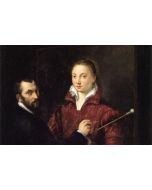Homes, houses and art in Europe: 1900-1960
Time: 14:00 - 16:00
Location: Keeley Street
- Course Code: VB968
- Dates: 30/04/24 - 04/06/24
- Time: 14:00 - 16:00
- Taught: Tue, Daytime
- Duration: 5 sessions (over 6 weeks)
- Location: Keeley Street
- Tutor: Emma Rose Barber
Course Code: VB968
Duration: 5 sessions (over 6 weeks)
Please note: We offer a wide variety of financial support to make courses affordable. Just visit our online Help Centre for more information on a range of topics including fees, online learning and FAQs.
What is the course about?
At a time of intense, experimental, bold and adventurous artistic practice in 20th-century Britain, we will see how artists and patrons, many of whom belonged to artistic groups transformed interiors to become places where they could express their individual and radical styles.
We will focus in particular on France and study the homes and artist studios as a case study in Paris. We will also look at the objects, the painted walls, the furniture and fireplaces, the art they collected, the pottery and the books on the shelves and consider how they inhabited their spaces. We will then look at a few artist colonies such as Pont Aven and others outside of France such as Worspwede.
What will we cover?
As case studies, the look and feel of artists’ homes in Paris including the home and studio of Oskar Zadkine and André Derain and the artistic salon of Gertrude Stein. We will follow in the footsteps of the Dutch artist, Mondrian in London and Paris and Gwen John who also lived in a village outside Paris called Meudon, where she painted Dominican nuns.
What will I achieve?
By the end of this course you should be able to...
-Identify the type of houses lived in by artists in the early part of the 20th century and consider how they made the houses into the homes that manifested their creative spirit
-Be able to make links between the appearance of art and artefacts in the homes with the sort of art the artists were making at the time
-Consider the influences on the spaces that were created.
What level is the course and do I need any particular skills?
This course is suitable for all levels.
You should be able to follow simple written and verbal instructions, demonstrations, hand-outs and health and safety information, and will be invited to take part in group discussion.
How will I be taught, and will there be any work outside the class?
You will be taught with lecture, slide presentations and group discussions. Handouts will be provided by your tutor to support your learning on the course; these handouts will be available digitally on City Lit's Google Classroom. You will be invited to join the Google Classroom about a week before the course begins.
Are there any other costs? Is there anything I need to bring?
You might wish to purchase a notebook for taking notes. You might wish to buy some of the books on any reading list provided.
When I've finished, what course can I do next?
Homes, house and art in Britain: 1900-1960
Concerning the spiritual: mysticism in 19th and 20th century art.
Emma Rose Barber is an art historian who has been teaching adults for over 25 years. She specialises in the visual culture of the Middle Ages and the Italian and Northern Renaissance. She has also taught classes on British art and has designed many different courses such as Last Suppers in Florence and Bosch, Breughel and the Surrealists. She has also given lectures on Women and Art. She used to run the history of art department at the British Institute in Florence and works for many institutions such as the Open University, Morley College and the department of continuing education at the University of Oxford. Her book – 111 Churches that you Shouldn’t Miss in London - is coming out in the autumn of 2020. She has spent the last five years with a Mini A-Z looking for churches to write about, many of which can be found on her blog – https://theitinerantchurchgoer.wordpress.com/. She is also writing a Cultural History of Wayfaring and writes articles for Selvedge Magazine.
Please note: We reserve the right to change our tutors from those advertised. This happens rarely, but if it does, we are unable to refund fees due to this. Our tutors may have different teaching styles; however we guarantee a consistent quality of teaching in all our courses.
